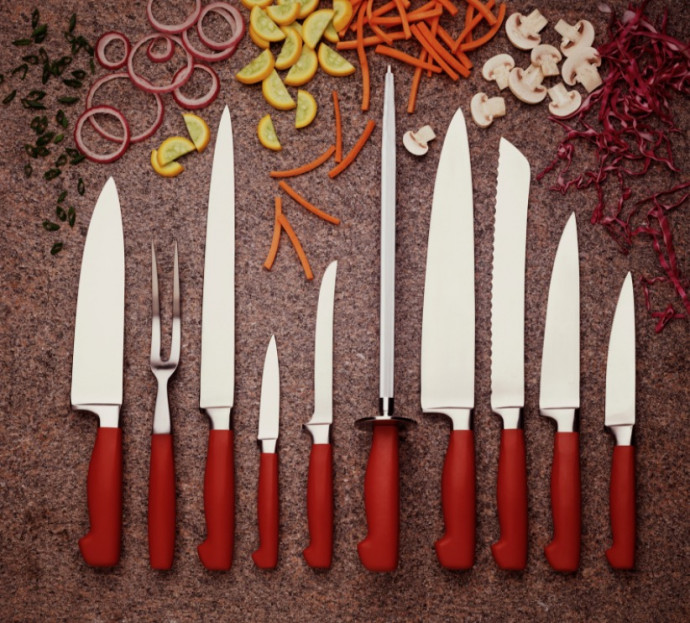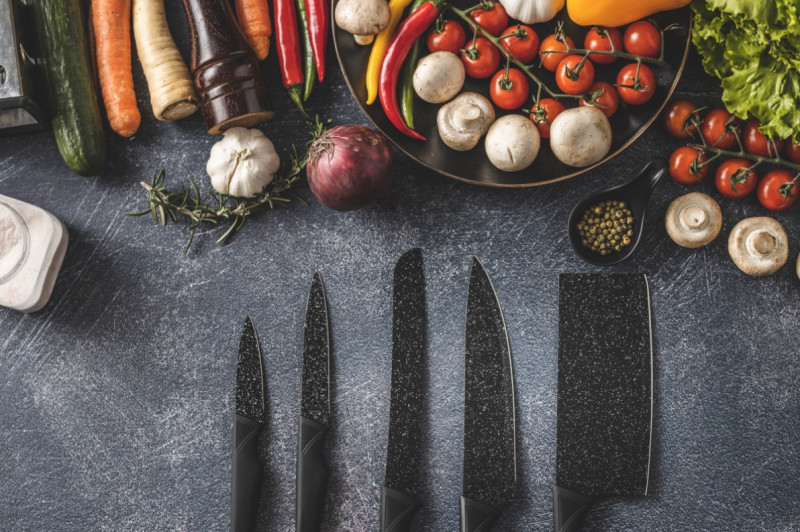Kitchen Hacks: Slicing, Dicing, and Chopping

Genius hacks and simple solutions are amazing because they make our lives easier, save time, and minimize effort. These kitchen hacks range from how to keep oven mitts and dish towels within reach, to making a smart recycling center in the kitchen, and everything else in between. These simple ideas and tips out there will help you squeeze as much space out of your kitchen as possible — without sacrificing style or your bank account, and I hope, they will make your time in the kitchen a little bit more pleasant! Discover a collection of the best tips for the trickiest parts of slicing, dicing, and chopping fruits and vegetables in your kitchen.
1. Cut Slicing Time in Half
Individually halving cherry tomatoes, grapes, or freshly pitted cherries can be time-consuming. Here’s a way to speed things along.
1. Place a medium-size plastic lid on a surface with the lip side up. Place a single layer of the food to be sliced in the lid and a second lid, lip side down, over the food.
2. With one hand gently but firmly holding the top lid and the other hand holding a sharp chef’s or serrated knife, slice horizontally between the lids, cutting the food in half.
2. To the Very End
Slicing to the very end of oblong foods like zucchini, cucumber, and salami can be dicey work. To save your fingers, spear one end of the food with a corn holder just deep enough for the prongs to get a good grip. Then grasp the corn holder, leaving your fingers out of harm’s way as you slice all the way to the end.
3. Knifeless Slicing
Instead of trying to slice radishes and carrots thinly and evenly enough for salad with a chef’s knife, enlist a vegetable peeler. The sharp blade makes it easy to cut wafer-thin slices.

4. Paper route for knives
Even the best knives dull quickly with regular use. To determine if your knife needs sharpening, put it to the paper test. Hold a sheet of paper by one end and drag your knife, from heel to tip, across it. If the knife snags or fails to cut the paper, it needs to be honed. If the knife still fails the test after you hone it, run it through a sharpener.
5. In-a-pinch knife sharpener
If you find yourself with a dull knife but without a knife sharpener, you can use the unglazed bottom of a ceramic mug to sharpen small knives. Applying moderate pressure, hold the knife at a 20-degree angle and carefully draw the entire length of the blade across the rough surface.
6. Sharpening vegetable peelers
To bring back the edge on a dull vegetable peeler, run the back of a paring knife along the blade at a 45-degree angle. The metal spine of the paring knife acts as a hone, aligning the tiny metal “teeth” of the blade.
7. Nonskid cutting boards
Nonskid shelf liner is a perfect tool for keeping cutting boards in place while chopping—just cut it to the same dimensions as your cutting boards. When the makeshift mats are not in use, just roll them up and store them neatly in a kitchen drawer.
